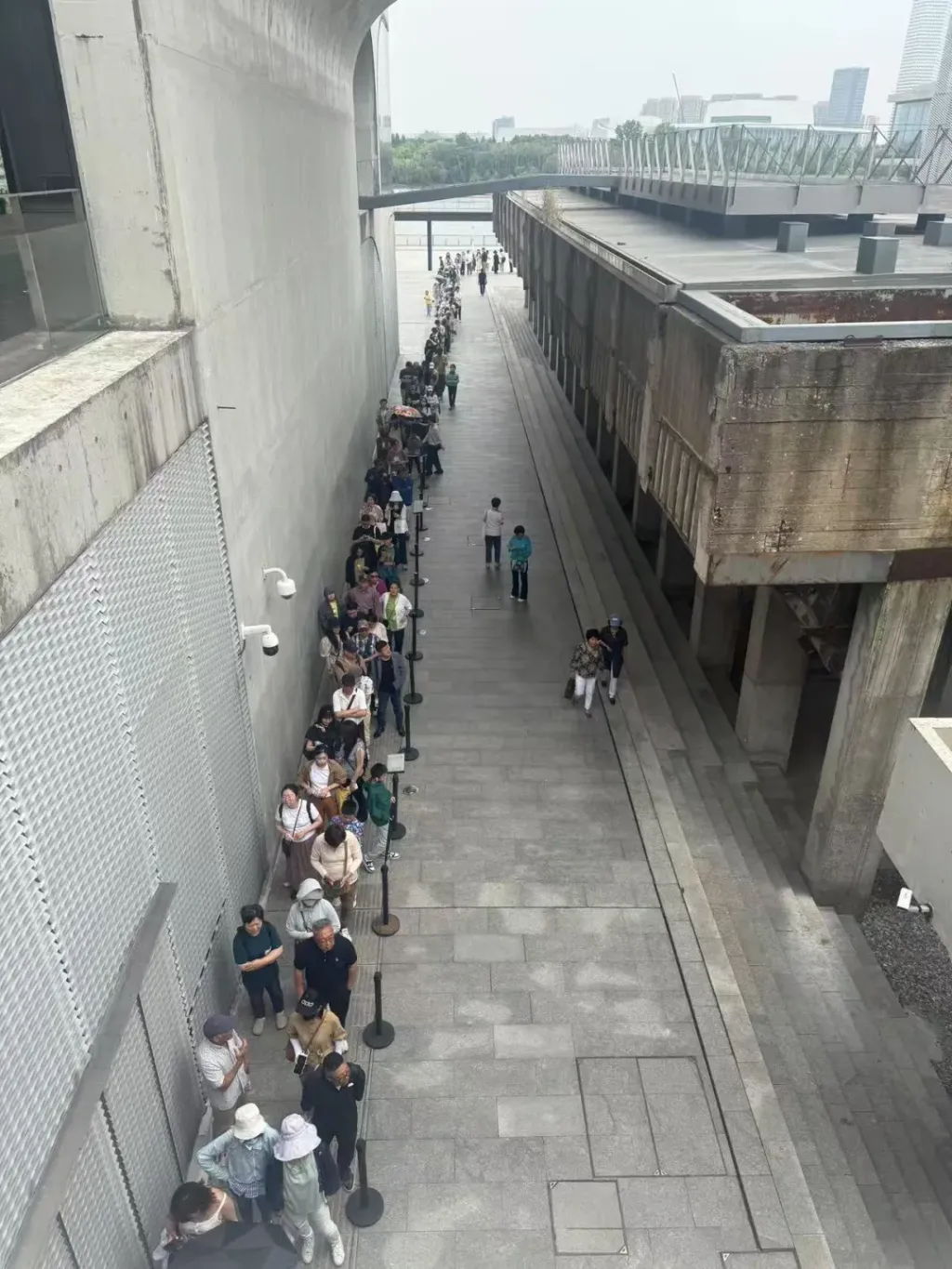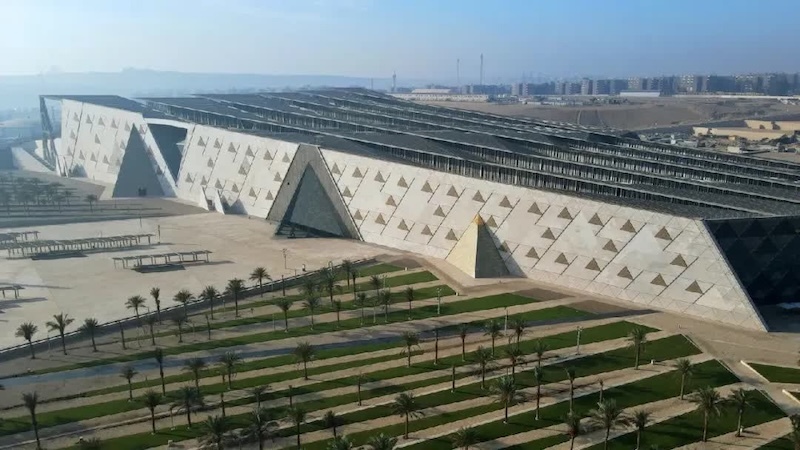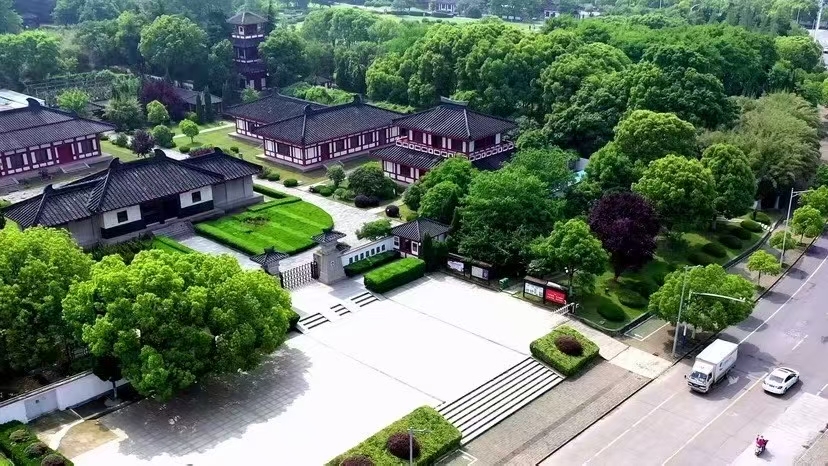
At 9 pm on June 29, as the lights in the exhibition hall went out, the special exhibition "Grand View of Heaven and Earth: Imprints of Civilization Across Time" at the Long Museum (West Bund) in Shanghai came to an end. As one of the most popular private collection ancient art exhibitions in the spring and summer of 2025, "Grand View of Heaven and Earth" has become a hot spot for visitors in Shanghai since its opening in March with more than 100 heavyweight exhibits such as the Chicken Cup. On free days, there is a long queue outside the museum. The museum's founder and collector Liu Yiqian has personally visited the exhibition hall many times in the past three months to explain cultural relics to the audience.

The exhibition is open to the public free of charge, and there is a queue outside the museum.
"All good things must come to an end. The Long Museum (Tian Di Da Guan) exhibition will end after closing at 9pm tonight. More than three months have passed really quickly. Thank you to all my friends who love art for their guidance." Liu Yiqian, the founder of Long Museum, said in a message on his WeChat Moments at around 6pm on June 29.
It is reported that this large-scale exhibition, which lasted more than three months, was themed on ancient civilizations and focused on presenting more than 100 cultural relics of great historical and artistic value from Liu Yiqian's private collection. During the exhibition, Liu Yiqian, the exhibition's chief planner and founder of Long Museum, often appeared in the exhibition hall, signing books and giving guided tours. On the afternoon of the closing day, he once again came to the exhibition hall to give the public a two-and-a-half-hour public welfare guided tour.

On the last day of the exhibition, collector Liu Yiqian gave a tour at the Long Museum. Photo: Zhang Shuhan Sophia
Liu Yiqian explained the history in a down-to-earth and humorous way, which attracted the audience to join in. He was almost always surrounded by people. The tour started with the exhibition concept. The exhibition hall uses a dark environment and focused lighting. The center of the space is equipped with a light column and Tai Chi-shaped scenery symbolizing "the creation of the world". A series of specially customized triangular display cabinets present a visual effect of interweaving the ancient and the modern, and being heavy yet contemporary. He said: "Our goal is to allow the three thousand years of civilization to travel through time and also through the future."

Liu Yiqian's guided tour on "518 Museum Day". It is reported that Liu Yiqian personally guided 7 times during the exhibition.
Liu Yiqian uses simple language to tell the stories behind the cultural relics: for example, the bronze artifact Xi Jia Plate, with an inscription of 133 characters, was made by Yin Jifu, an important minister during the reign of King Xuan of Zhou. "It is not only a documentary material, but also a witness to the culture of the Book of Songs"; for example, half of a jade seal from the Ming Dynasty, "the broken side reminds me of the Venus de Milo, which has dignity but also warmth after being broken"; and the Yongle thangka and the bronze gilt Ksitigarbha Bodhisattva, "there is an indescribable shocking power, which is the gaze left by history."

Liu Yiqian’s guided tour on the closing day of the exhibition.
When talking about the original intention of collecting, he does not shy away from talking about money and value. "If we always talk about art around 'how much', it is disrespectful to cultural relics." But in terms of collection logic, he divides his collection into two main lines: "One is the imperial line, either imperially made or collected; the other is the literati line, more inclined to calligraphy and painting - these are the roots of Chinese art."

A staff member is lifting the glass cover of the "Qing Qianlong Gilded Bronze Penglai Eight Immortals Music Table Clock"
The scene was particularly impressive. At Liu Yiqian's suggestion, the "Qing Qianlong Bronze Gilded Penglai Eight Immortals Music Table Clock" in the exhibition hall was awakened. The staff lifted the glass cover of the music table clock, and he gently turned the hidden spring behind the clock body, and the clear and melodious music sounded. The pavilion on the left side of the fairy mountain and the Yin-Yang Bagua symbol on the front began to slowly rotate, and the glass waterfall and the stream gradually showed a brilliant and rippling brilliance. The ancient machine played a melody that transcended time and space, making the audience seem to be in the time hundreds of years ago.
This moment also became a precious memory of the closing day of the exhibition.

A Qing Dynasty Qianlong Gilded Bronze Penglai Eight Immortals Musical Table Clock


